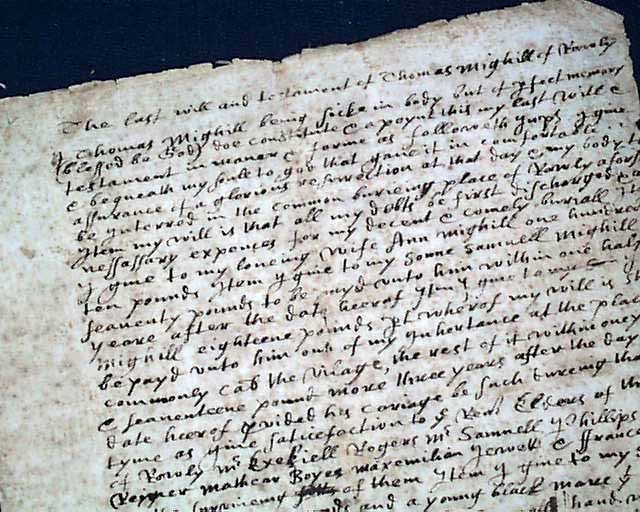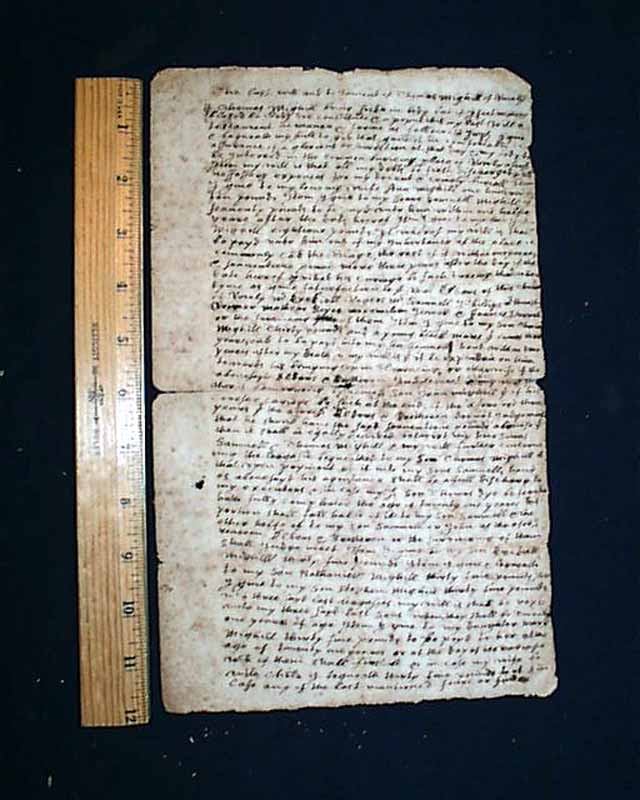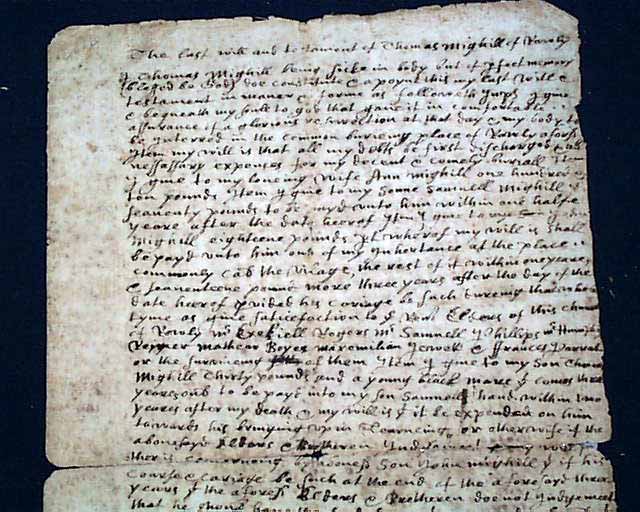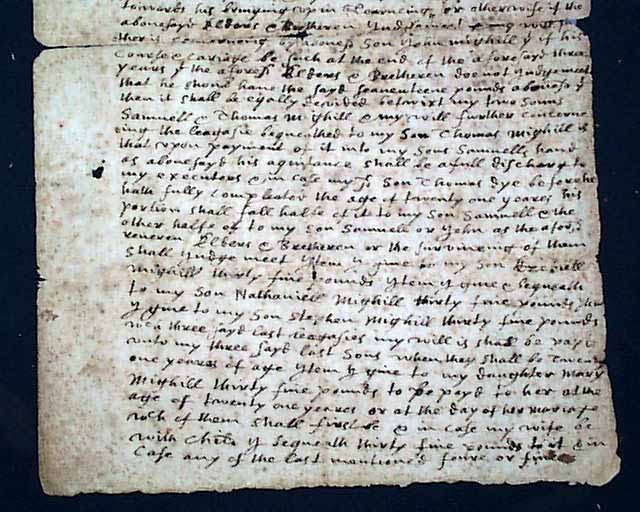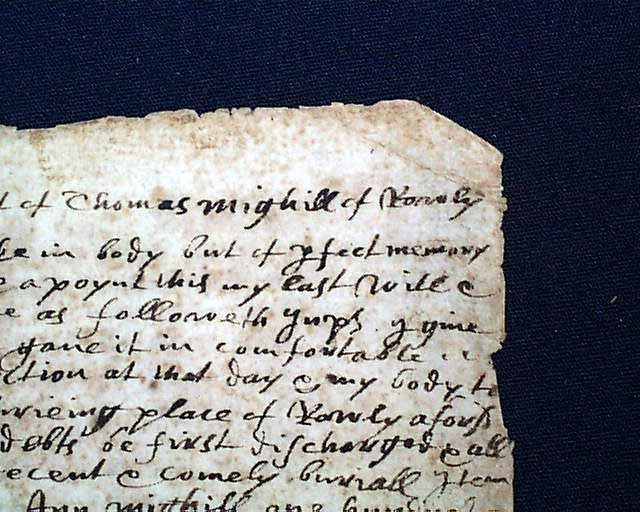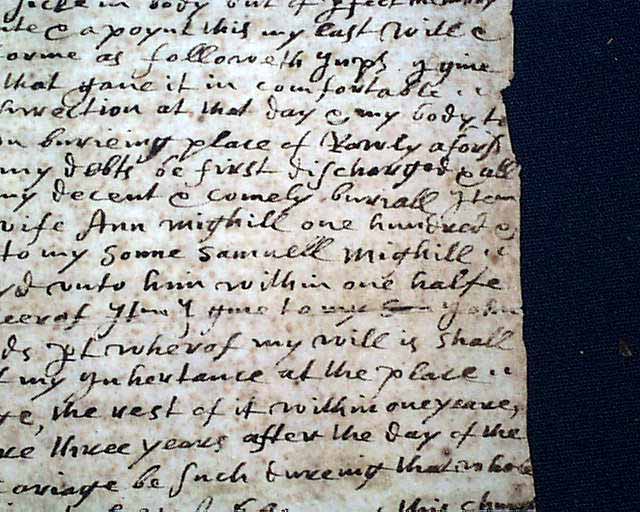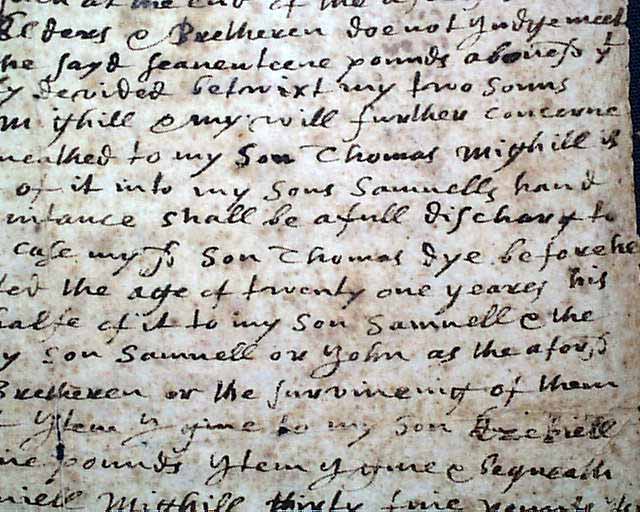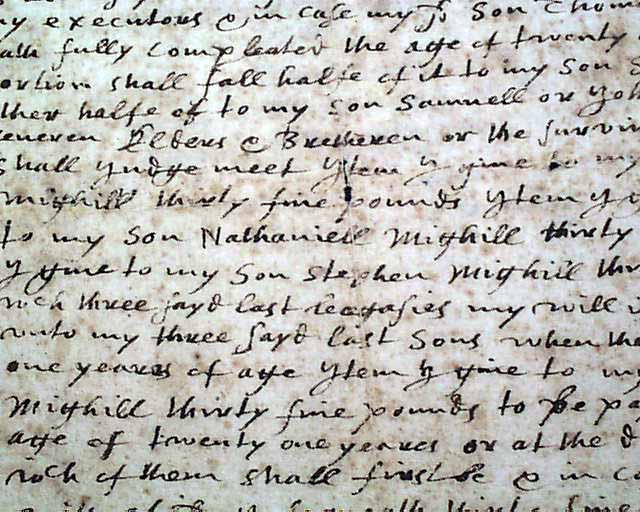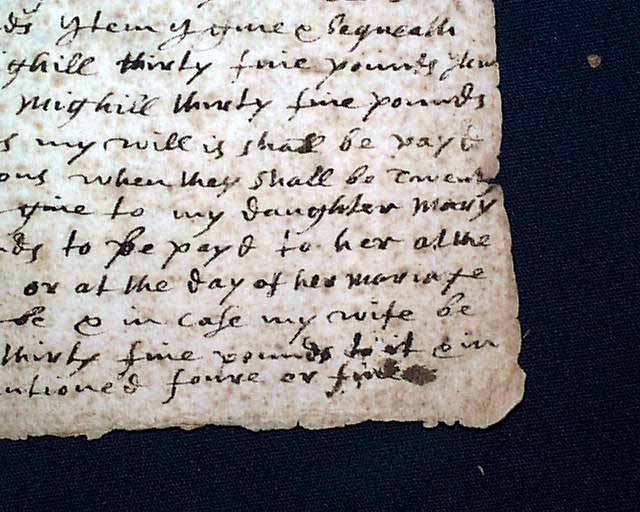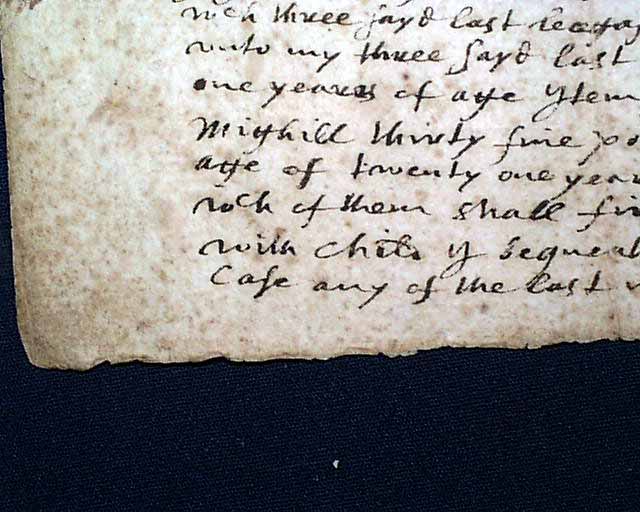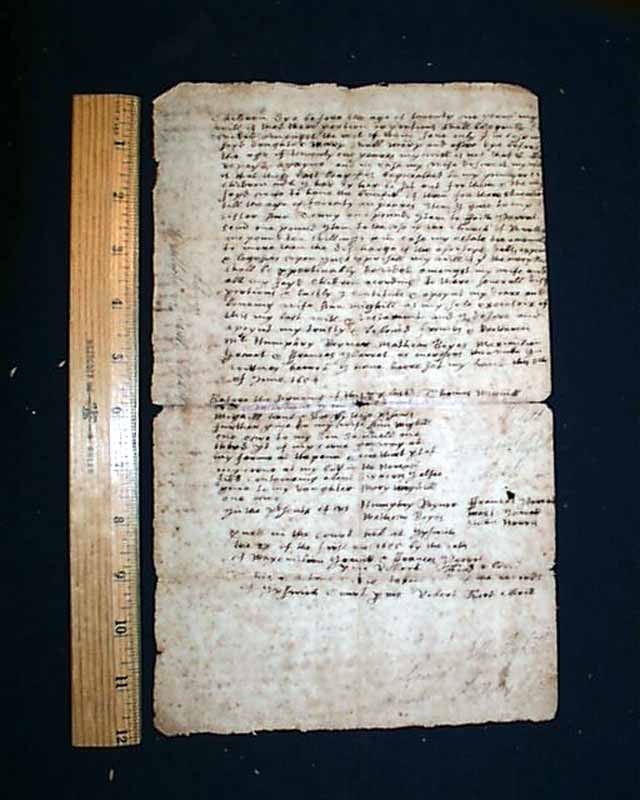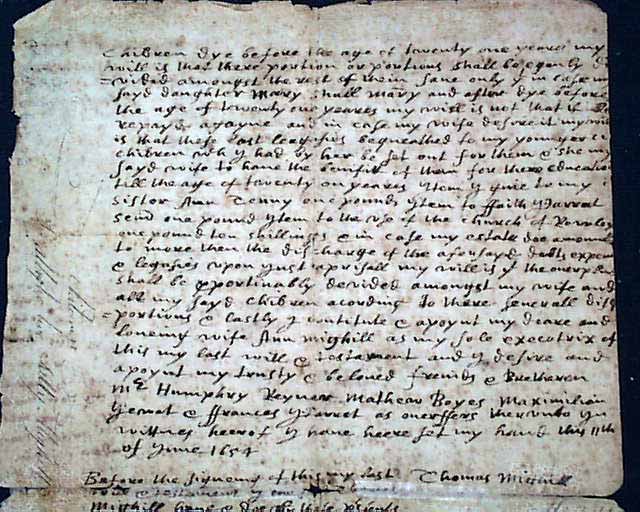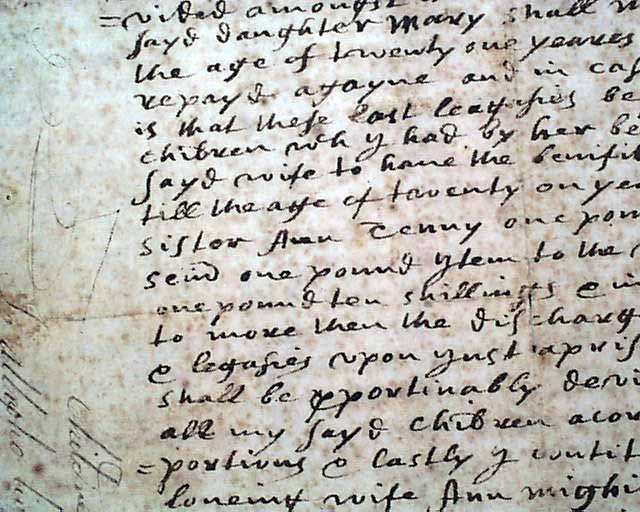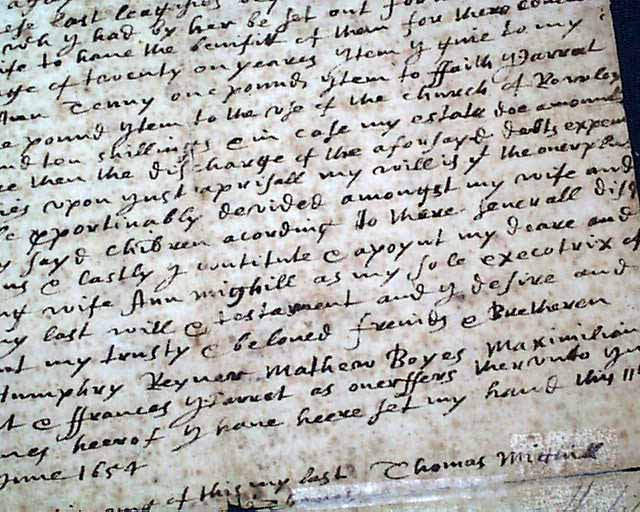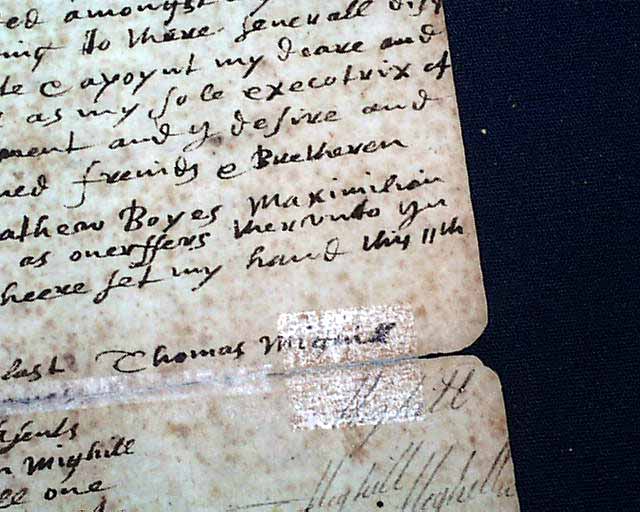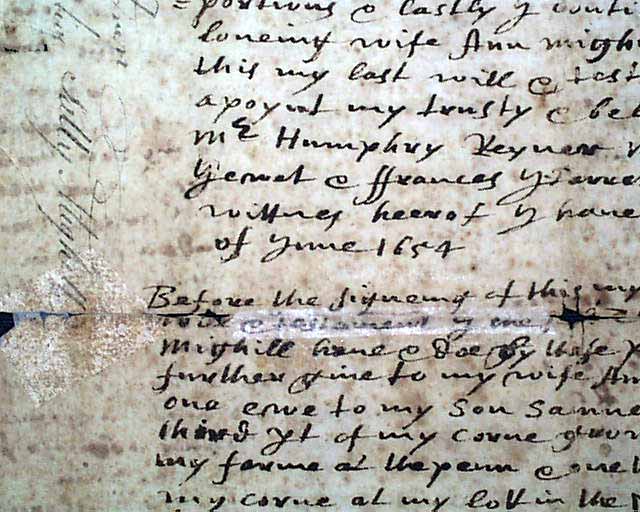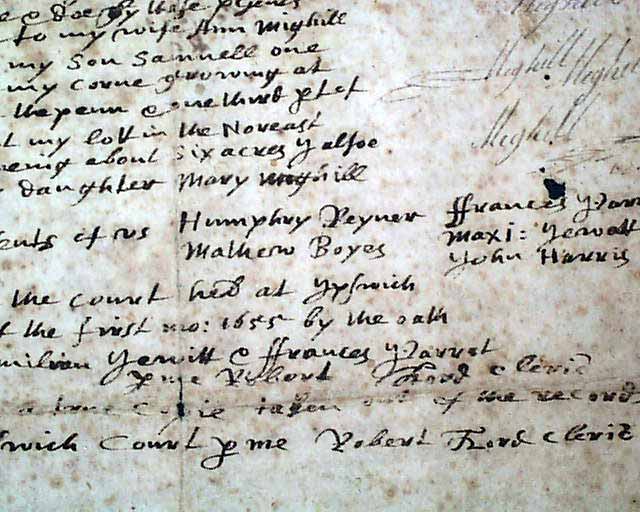Pilgrim-era last will & testament of a man from Rowley, Massachusetts...
Item # 540314
Currently Unavailable. Contact us if you would like to be placed on a want list or to be notified if a similar item is available.
* Pilgrim-era last will & testament of Thomas Mighill of Rowley, Massachusetts
This is the earliest dated colonial America document we have encountered. Verification of it being from America is firmly documented by numerous references which are noted in the website: "The Mighill Family".
The following is from the family website which you can visit to verify:
"Thomas Mighill came to America with his wife Ellen and settled first in Roxbury about 1636. They removed to Rowley in 1639 where he was ordained a deacon of the church on Dec. 3, 1639. His wife was recorded as the first person buried in Rowley. Thomas' second wife was Ann Parrott, sister of Deacon Francis Parrott. Thomas was made a freeman May 13, 1640 and had a three acre house lot on Weathersfield Street in 1643. Thomas often served on Essex County court juries and grand juries and was chosen one of three men in 1649 to end small causes in Rowley.
An early town inventory of lands showed Thomas with a three acre house lot on Wethersfield Street bounded west by the highway and east by Mrs. Margery Shove.He also had 56.5 acres in numerous plots around the town.Thomas Mighill was a selectman in 1650 and had a mault kiln across the street from his house. He also viewed and divided land for the town on different occasions. On Feb. 10, 1670-1 215 acres were laid out to widow Mighill of Rowley, bounded north by the Merrimack River, east by Thomas Kimball and Johnson's Pond, south by commons, and west by John Watson.
Thomas Mighill and Humphrey Rayner were chosen as guardians by the children of George Abott, late of Groton, in 1648. These two men also witnessed the will of John Jarratt in 1647. In 1649 Thomas took the inventory of the estate of Robert Johnson, who was a cousin of Humfrey Rayner.Thomas also was made an overseer of the will of Thomas Barker and took the inventory of Barker's estate with Rayner and Joseph Jewett. There may be clues in this information about Thomas' extended family (i.e. his in-laws, etc.). This is especially the case with George Abott.
Thomas made his will June 11, 1654. It was proved March 27, 1655 and mentions his wife Ann; three children by his first wife: Samuel, John, and Thomas; and his four children by his second wife: Ezekiell, Nathaniel, Stephen, and Mary. He also made provision for a child his wife was then carrying. This was his postumous daughter Ann, who died shortly after birth. He also mentioned his "sister Ann Tenny", which might be of some use in locating his English home. Ann Mighill was made the executrix. Inventory of his estate was taken June 24, 1654 and amounted to 571.14.11 of which 70 pounds was used to pay off debts. Ann Tenney was the wife of Thomas Tenney. She was buried 26. 7 mo. 1657.[4/526] Thomas Tenney then married the widow Elizabeth Parrat Feb. 24, 1657-8.
Thomas' widow Ann died Nov. 17, 1694. Ann made a bequest to her sister Faith Parrott Senior. Family tradition has it that Thomas was born in 1606 and wife Ellen in 1610."
Portions in bold can be see in the document photos shown below. Although the numerous references from the website appearing in this document strongly verify it being from the colonies, certainly the strongest evidence is the exact date that the will was made: June 11, 1654, clearly noted near the end of the will (see photos).
A very rare opportunity to own a document from Pilgrim-era America, as the Pilgrims landed in America just 34 years before this document was written. Thomas Mighill was a contemporary of those on the Mayflower!
The document is a single sheet measuring 7 1/2 by 12 1/4 inches. Some wear at the several folds and the margins with a few small holes at fold junctures. Some archival mends to the folds on the reverse. There is some writing which appears to be 19th century in the margins of the reverse (see).
Category: The 1600's and 1700's


